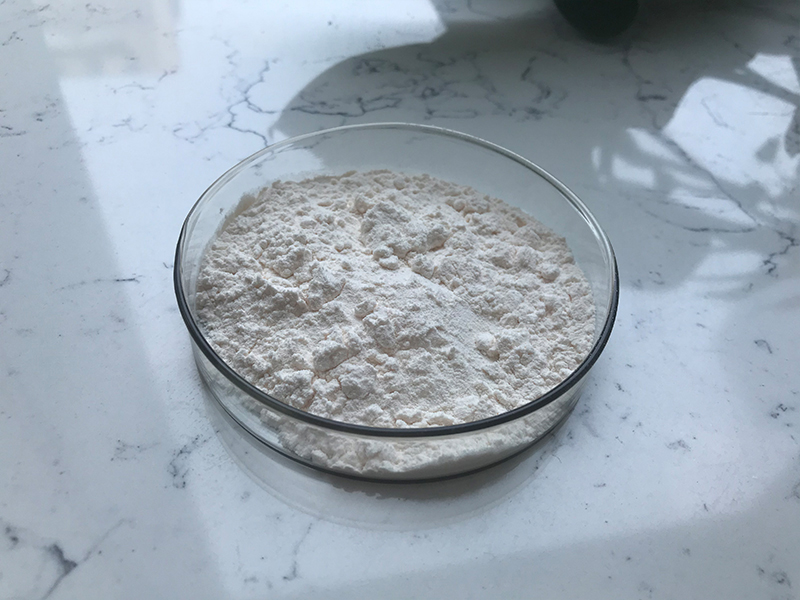Just like Glycolic Acid (derived from various fruits) and Salicylic Acid (derived from willow bark), AzA is a natural organic acid, prevalent in plants such as grains, wheat, rye, and barley. It can also be synthesized and secreted by the Malassezia yeasts present on our skin. Nowadays, mass-produced AzA is obtained through ozonolysis of oleic acid.
Chemical Structure and Physical Properties
The molecular formula of AzA is C9H16O4. Its chemical structure, COOH-(CH2)7-COOH, represents a naturally occurring straight-chain saturated dicarboxylic acid with nine carbon atoms. AzA usually appears as a white to the slightly yellow monoclinic prism, needle-like crystals, or powder with a melting point of 106.5℃. It’s easily soluble in hot water, hot benzene, and alcohol while slightly soluble in water, ether, and benzene.
Pharmacological Actions
Antimicrobial Activity: AzA impedes the protein synthesis of anaerobic and aerobic bacteria, directly killing bacteria present on the skin surface and inside hair follicles. Studies have shown that topical application of AzA for 2-3 months can significantly reduce the number of Cutibacterium acnes on the skin surface and within the hair follicles. No drug-resistant strains have been reported so far [1]. AzA exhibits bactericidal effects against Staphylococcus epidermidis and Cutibacterium acnes when its concentration exceeds 250 mmol/L. However, the minimum inhibitory concentration (MIC) may vary depending on conditions; the MIC for Staphylococcus epidermidis ranges from 25-125 mmol/L, while for Cutibacterium acnes, it ranges from 0.1-250 mmol/L [2].

Anti-inflammatory Action: AzA inhibits the generation of reactive oxygen species, exerting an anti-inflammatory effect. In vitro, it can inhibit the hydroxylation of aromatic compounds (including tyrosine) induced by reactive oxygen groups and the peroxidation of arachidonic acid. It also decreases the production of superoxide anions and hydroxyl radicals in neutrophils. AzA can suppress the inflammatory cascade reaction of cytokines, like interleukin-1β (IL-1β), IL-6, and tumor necrosis factor-α (TNF-α), by inhibiting the nuclear transcription factor (NFκB) [3].
Regulation of Follicular Keratinization: AzA reduces the synthesis of filamentous keratin, preventing excessive follicular keratinization. AzA concentration of 10-40 mmol/L exerts a concentration and time-dependent antiproliferative effect on keratinocytes cultured in vitro. A concentration of 20 mmol/L of AzA in the culture medium of keratinocytes can inhibit DNA synthesis, but it has no effect when the concentration is below 20 mmol/L. Long-term external use can reduce the number and size of keratohyalin granules, leading to transition cells, widened cytoplasm, swollen mitochondria, and enlarged rough endoplasmic reticulum. It has been proven that AzA has antiproliferative effects on keratinocytes [4].
Inhibition of Sebum Secretion: Androgens, particularly dihydrotestosterone, can stimulate sebaceous gland activity, leading to excessive sebum secretion. The 5α-reductase enzyme in sebaceous glands increases the conversion of testosterone to dihydrotestosterone. AzA has a competitive inhibitory effect on this enzyme; its inhibitory action can be detected even when its concentration is as low as 0-2 mmol/L, and it achieves complete inhibition at a concentration of 3 mmol/L [4].
Reduction of Pathological Melanin Deposition: Pathological melanin deposition is related to excessive activation and functional abnormalities of melanocytes. AzA reduces pigmentation by inhibiting the activity of abnormal melanocytes without affecting normal ones due to its higher penetration into abnormal cells [5].
Inhibition of Cell Proliferation: Studies show that AzA can reduce tyrosinase activity and melanin synthesis in epidermal melanocytes and melanoma cells in a concentration-dependent manner. It can inhibit the proliferation of melanoma cells and induce apoptosis in murine melanoma cells [5]. In vitro, studies suggest that AzA inhibits the proliferation of melanoma cells by reducing the in vitro fibrinolytic potential of human melanoma cell lines [6]. Observations after AzA treatment showed mitochondrial swelling, ridges destruction, and vesicular Golgi apparatus membranes in melanoma cells, further confirming AzA’s damaging effect on human melanoma cells with one of its targets being the mitochondria. AzA shows no significant adverse reactions in normal human melanocytes [7]. Breathnach and others have reported that AzA can inhibit mitochondrial oxidoreductase and enzymes associated with DNA synthesis, indicating its potential as an anti-melanoma agent [8].
Conclusion
In conclusion, AzA showcases a variety of mechanisms of action, including antibacterial, anti-inflammatory, and antiproliferative effects. It can be used as both a functional cosmetic and a pharmaceutical product to treat skin conditions like acne, rosacea, and melasma. Its notable clinical efficacy and excellent safety profile make it suitable even for pregnant and lactating women. This article reviews the systemic use of AzA in dermatology, summarizing relevant research reports.
